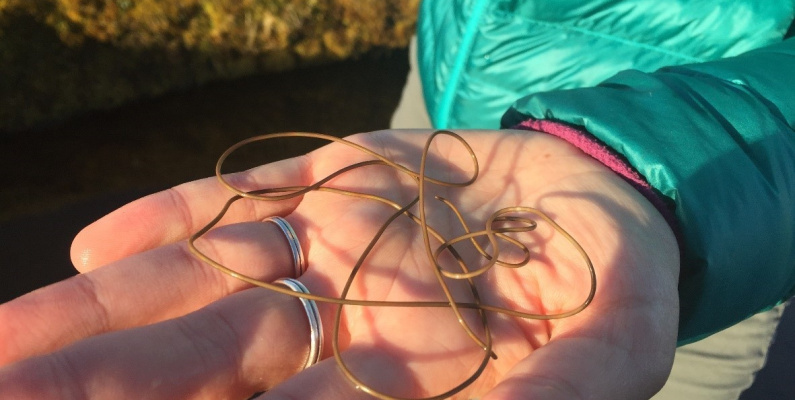
When MSc research student Zachary Tobias arrived at the University of Otago from the United States, little did he know that he’d end up discovering a new species of hairworm. However in March 2016 he and his then fiancé (now wife), Brenah Hearne, made a unique find while collecting specimens for Zac’s research at the Rock and Pillar Range, near Dunedin.
“We had been collecting these parasites all summer, but to the naked eye this particular specimen didn’t seem a whole lot different from the others. However, after having a look at the genetic data, it was obvious it was special. My collaborator Andreas Schmidt-Rhaesa, the worldwide expert on hairworm taxonomy, confirmed our suspicions. I never thought I would find an undescribed species!” Zac recollects.
Acknowledging the strong relationship Māori have with the environment, their wealth of knowledge about native flora and fauna, and their prominent role in ecological stewardship, the specimen was named Gordionus maori. The new species increases our knowledge of New Zealand’s amazing native biodiversity and, now formally described, opens avenues for future research on the behaviour, ecology and evolution of these fascinating worms.
Hairworms from the genus Gordionus, famously known as body snatchers, have complex and intriguing life cycles. The eggs are laid in water which hatch into larvae that infect a host after it engulfs it with water. This host is usually a stonefly or a mayfly nymph. When the host metamorphoses and exits the water, it transports the parasite onto land, where it’s eaten by the definitive host – a cricket or a grasshopper. When they reach adulthood, hairworms become free-living and do not need a host for survival.
The free-living worms are unable to reproduce on land and turn to parasitism for transport. They hitch a ride to a pond or puddle aboard an invertebrate host who they manipulate to seek out and jump into water. The adult worm then wriggles out and swims off in search of a mate.
On finding a mate, they form a mating knot known as a Gordian knot. The name comes from an ancient legend associated with Gordius, Emperor of Phrygia, who constructed an intricate knot and declared whoever untied it should rule all of Asia. According to the myth, the knot was unravelled by Alexander the great.
Although discovered in 2016, the species description was published in the Journal of Zoology earlier this year. Given its local significance, Otago Museum became the obvious destination for housing the holotype of the newly described hairworm. A holotype is the specimen used to identify and designate a species and can be used for comparative purposes by researchers in the future.
Image: Brenah Hearne holding the newly discovered species of hairworm, Gordionus maori, during field collection at the Rock and Pillar Range. By Brenah Hearne.
